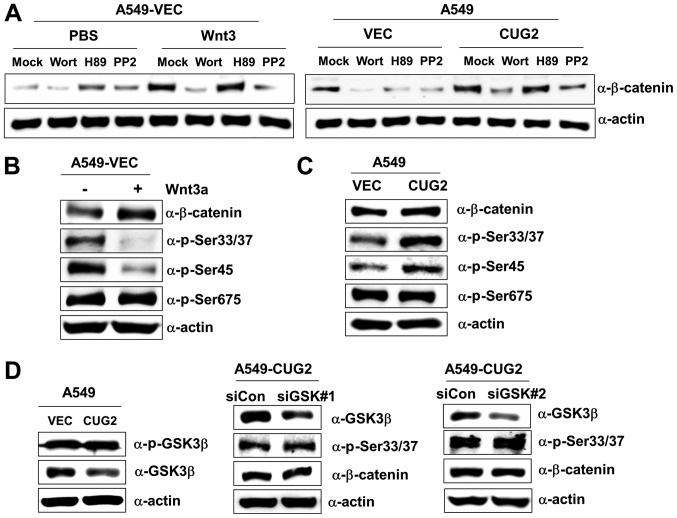Figure 2.
CUG2-induced β-catenin phosphorylation is unique and differs from that induced by Wnt3a. (A) A549-VEC and A549-CUG2 cells were treated with wortmannin (10 µM), H89 (10 µM), PP2 (2.5 µM) and DMSO (mock) in the presence of Wnt3a (100 ng/ml) or PBS as a vehicle for 12 h, and cell lysates were prepared. Proteins present in the cell lysates were separated by performing SDS-PAGE on 10% gels, and β-catenin and α-actin were detected using corresponding antibodies. (B and C) Proteins present in the lysates of A549-VEC cells treated with Wnt3a (100 ng/ml) or PBS, and of A549-CUG2 cells were separated by performing SDS-PAGE on 10% gels. Phosphorylation states of β-catenin following treatment were determined using antibodies against phosphorylated Ser33/Ser37/Thr41, Ser45 and Ser675 of β-catenin. (D) Lysates of A549-VEC and A549-CUG2 cells treated with a control or GSK3β siRNAs (#1 and #2) were separated by performing SDS-PAGE on 10% gels. GSK3β and phosphorylated GSK3β were detected by performing western blot with corresponding antibodies. CUG2, cancer-upregulated gene 2; GSK3β, glycogen synthase kinase 3β.

